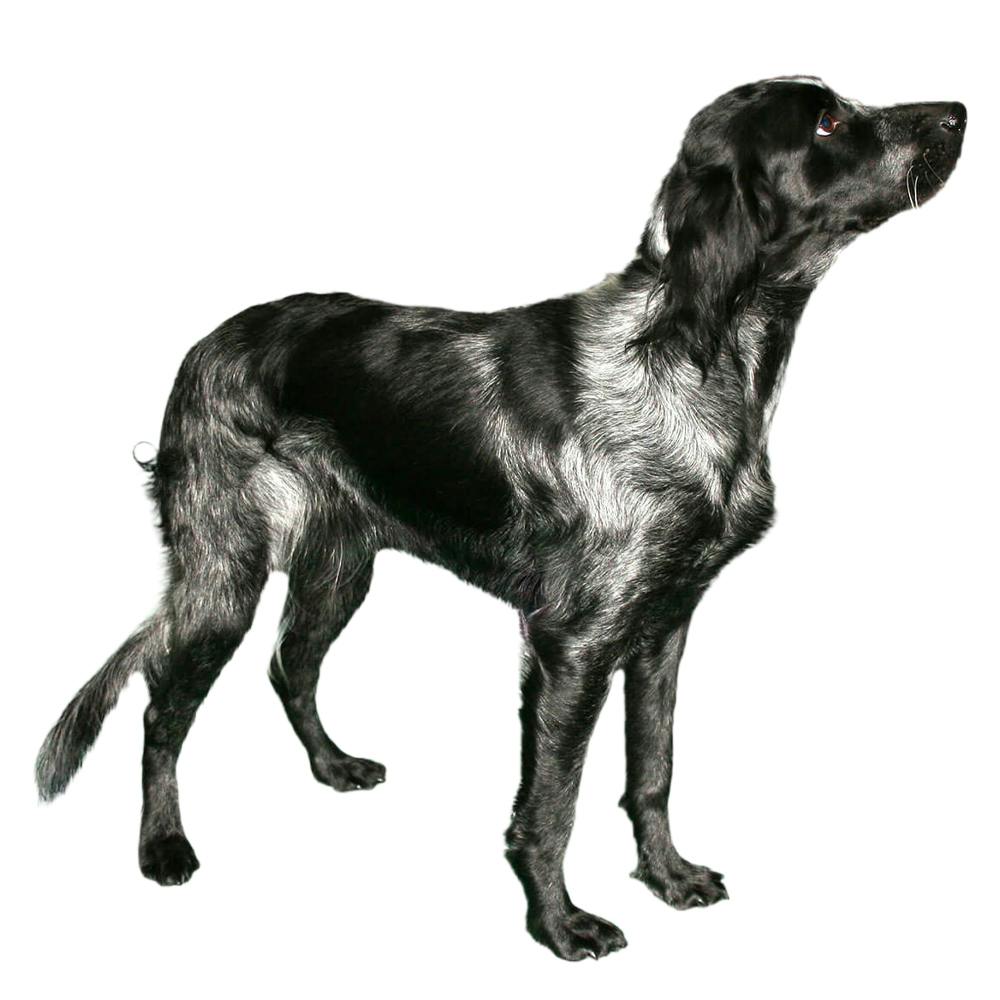
Blue Picardy Spaniel
The Blue Picardy Spaniel, also known as the Epagneul Bleu de Picardie, resulted from breeding old French spaniels crossed with the Blue Belton English Setter and the Gordon Setter. The first black, blue/grey coated spaniel that came to symbolize the breed was first seen in 1875. The Blue Picardy Spaniel is classified as a different breed than the Picard Spaniel, specifically because of its skin color and distinctive coat. They were bred to retrieve during a hunt, and are known to love water. By the 1960s after World War II, the breed came close to disappearing. By 2003, the dedicated efforts of breeders finally came to fruition, and the Blue Picardy Spaniel outnumbered their cousin the Picardy Spaniel.
- Origin
- France (Picardie region)
- Alternate Names
- Epagneul Bleu de Picardie
- Average Male Height
- 22-23.5 inches
- Average Female Height
- 20-22.5 inches
- Average Male Weight
- 40-45 pounds
- Average Female Weight
- 45-50 pounds
- Coat Length
- Medium
- Coat Type
- Thick and Flat, or Slightly Wavy
- Coat Colors
- Blue-Grey Roan
- Coat Pattern
- Black Patches and Speckles
Genetic Predispositions and Health
The Blue Picardy Spaniel is a generally healthy breed, but can suffer from hip dysplasia and eye disorders such as ectropion. They can be prone to ear infections and obesity. Genetic testing is recommended, including for the following additional conditions: hyperuricosuria, degenerative myelopathy, and progressive rod-cone degeneration.
Personality and Behavior
Blue Picardy Spaniels are known for their intelligence, gentle nature, and high energy levels. They are keenly attentive and easily trainable, making them good family dogs. However, their energy level requires consistent exercise and mental stimulation. Their hunting heritage also means they may have a strong prey drive, so they might not be suitable for homes with small pets unless socialized properly from a young age.
They are generally good with children and show a patient and tolerant temperament. Despite their high energy, they can also be calm indoors, which contributes to their success as family pets.
Like many sporting breeds, they require interaction with their human family and don't do well if left alone for long periods. They are usually good with other dogs and can be sociable, making them good candidates for multi-pet households.
Fun Facts
The Epagneul Bleu de Picardie was recognized by the United Kennel Club (UKC) on January 1, 1996.
The Picard Spaniel and Blue Picardy Spaniel Club was formed in 1921.
References
https://www.ukcdogs.com/epagneul-bleu-de-picardie https://www.vetstreet.com/dogs/blue-picardy-spaniel/ https://www.petguide.com/breeds/dog/blue-picardy-spaniel/ https://www.ckc.ca/en/Choosing-a-Dog/Choosing-a-Breed/Sporting-Dogs/Spaniel-Blue-Picardy